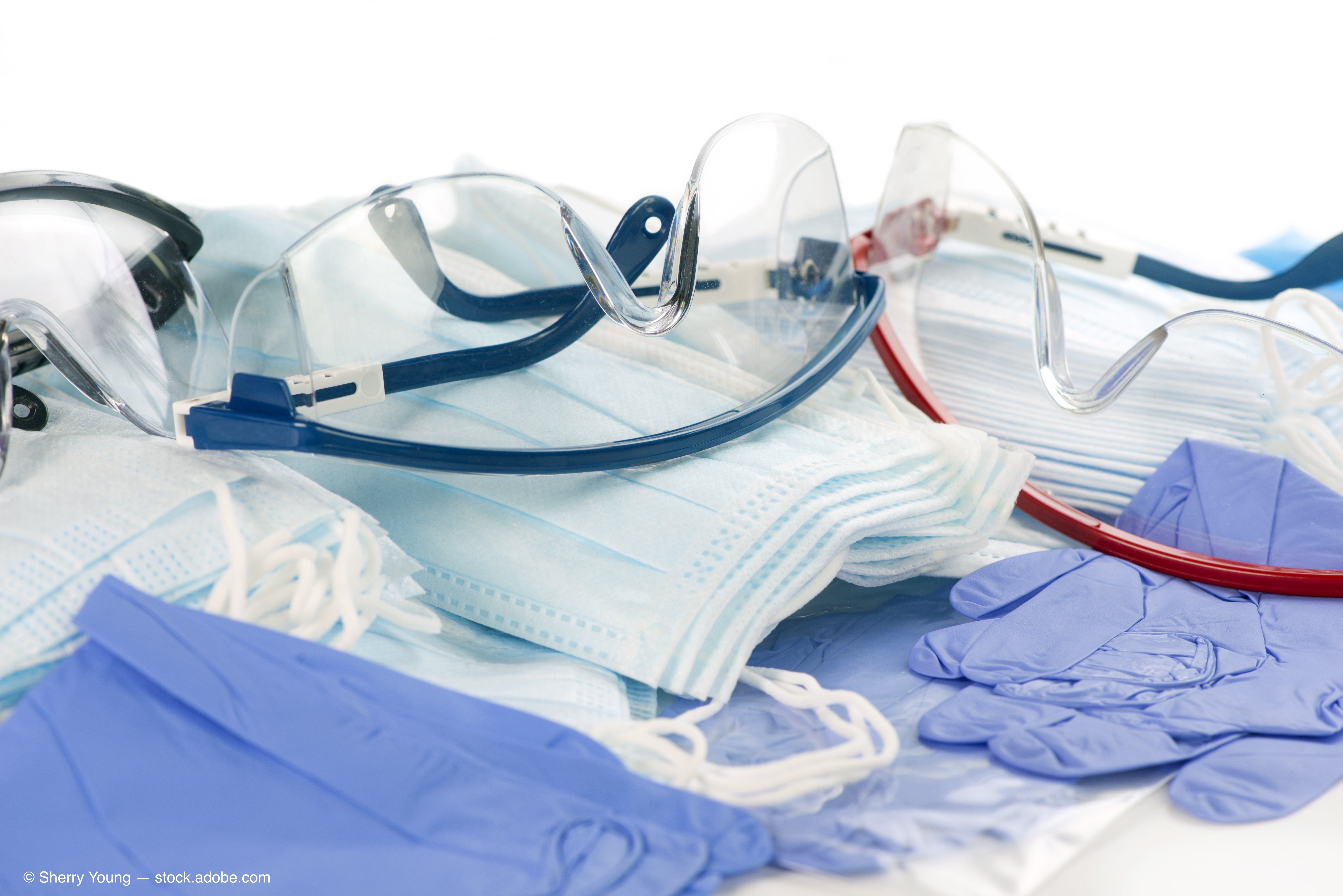- COVID-19
- Biosimilars
- Cataract Therapeutics
- DME
- Gene Therapy
- Workplace
- Ptosis
- Optic Relief
- Imaging
- Geographic Atrophy
- AMD
- Presbyopia
- Ocular Surface Disease
- Practice Management
- Pediatrics
- Surgery
- Therapeutics
- Optometry
- Retina
- Cataract
- Pharmacy
- IOL
- Dry Eye
- Understanding Antibiotic Resistance
- Refractive
- Cornea
- Glaucoma
- OCT
- Ocular Allergy
- Clinical Diagnosis
- Technology
COVID-19: Hospitals, practices set PPE policies for ophthalmic use
As facilities find masks and personal protective equipment in short supply, hospitals and practices must decide what is appropriate PPE for ophthalmologists performing ophthalmic examinations, particularly when it comes to masks and goggles.

Amid the ongoing COVID-19 pandemic, ophthalmologist and patient safety remains the primary concern for hospitals and practices nationwide.
As facilities find masks and personal protective equipment in short supply, a debate has ignited over what is appropriate PPE for ophthalmologists performing ophthalmic examinations, particularly around the use of masks and goggles.
According to the American Academy of Ophthalmology, amid reports of ophthalmologist deaths in China and Italy, new data about environmental virus contamination and increased awareness of asymptomatic and presymptomatic spread of new infections all favor mouth, nose, and eye protection.
After looking at COVID-19 data from the World Health Organization (WHO) and CDC, the AAO issued guidelines for ophthalmologists recommending protection of the mouth, nose, and eyes when caring for patients potentially infected with the virus.
Andrew G. Lee, MD, chair of the Blanton Eye Institute, Houston Methodist Hospital, in Houston, Texas, said ophthalmologists at Houston Methodist are following AAO guidelines, which recommend personal protective equipment, including gloves, gowns, respiratory protection (N-95 masks, slit-lamp breath shields), and eye protection (goggles).
Supply shortages
However, with PPE in short supply, healthcare providers are expressing concern. They fear getting infected by the patients they care for, and then passing the virus on to others.
Three months into the pandemic, healthcare professionals are experiencing a manufacturing and supply chain shortage that is only expected to worsen. Dozens of hospitals and clinics across the nation are down to a one-week supply. Demand for N95 masks could rise threefold to 56 million this year, according to a survey by Premier, a healthcare consulting company. About 86% of U.S. hospitals are worried about access to PPE, the company said.
The AAO noted shortages of PPE and growing concerns about how effective masks are after extended reuse may impact widespread adoption. As a result, hospitals across the country have issued varying guidances, from forbidding physicians from wearing masks except in high-risk interactions, presumably for fear of shortages, to mandating all hospital staff and patients wear surgical masks to reduce asymptomatic transmission.
In hotspot areas, many hospitals require all caregivers to wear N-95 masks. Many facilities are enabling policies regarding the use, and in some instances, reuse, of PPE.
Peter J. McDonnell, MD, chief medical editor of Ophthalmology Times,® and director of the Wilmer Eye Institute, Johns Hopkins University School of Medicine, Baltimore, pointed out that until the time comes when everyone or almost everyone can be tested, medical professionals simply cannot know who is infected (and asymptomatic), who was infected and has recovered with antibodies against the virus, and who is not and has not been infected.
“We therefore have to suspect that any person we see might be infected,” he said. “Because ophthalmologists work so close to the face, it is better to err on the side of caution.”
Masks required
Dr. McDonnell noted that at his institution, masks (surgical or equivalent) are required for all doctors and all patients.
“Patients who need someone to accompany them to a visit may only bring one companion, and that person must wear a mask as well,” he said. “Slit lamps have clear plastic sheets to limit any respiratory droplets from the patient reaching the doctor and vice versa.”
Before a patient or companion can come to an ophthalmology clinic, Dr. McDonnell noted that they must be afebrile and not have symptoms suggestive of a flu-like illness.
“If they have any of these, but they also have an urgent eye problem that must be managed or they will likely suffer permanent vision loss, then we will see them as we see the known COVID-19 patients,” he said.
Dr. McDonnell said known or suspected COVID-19 patients are seen in a negative pressure environment and the doctor will have full protective equipment., including gown, N95 mask, and face shield.
Basis for allocation
According to the FDA some distributors may have placed certain types of PPE “on allocation,” basing the amount available to the healthcare institutions on previous usage, not projected use. Increased use may exceed the available supply of PPE, resulting in shortages at some healthcare institutions.
The FDA is promoting conservation strategies by institutions and personnel-categorized for a range of clinical needs and supply levels-intended to assist healthcare institutions in determining conservation procedures during this time.
In a press release, the Federal Emergency Management Agency said it is now playing a primary national role in determining how PPE is distributed across the country. State and local governments are also playing a role in the supply and distribution of PPE.
Additional guidance
On April 6, the FDA issued a guidance for remote ophthalmic assessment and monitoring devices (e.g., visual field devices, ophthalmic cameras) to expand the capability of remote ophthalmic assessment devices to reduce patient and healthcare provider contact during COVID-19.
According to its website, the FDA also will not object to distribution and use of PPE, including masks, gowns, gloves and respirators, when the devices are tested and labeled in keeping with its enforcement policies. For PPE meeting the criteria, the FDA will waive regulatory requirements such as registration and listing, good manufacturing practice, and unique device identification.
PPE that does not meet the criteria in the enforcement policy must submit a request for Emergency Use Authorization to FDA or obtain clearance from FDA.
